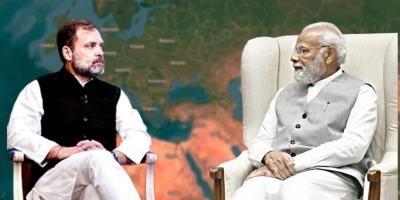In a surprising turn of events during this year’s Monsoon Session of the Indian Parliament, Rahul Gandhi, leader of the Indian National Congress, has reportedly overtaken Prime Minister Narendra Modi in terms of viewership on various social media platforms. The Congress Party claims a resounding victory in the realm of digital engagement, showcasing their leader’s popularity across social media.
The Indian National Congress (INC) recently shared data on the viewership of both Rahul Gandhi and Prime Minister Modi’s speeches, highlighting their social media performance, although the period of the data was not specified.
Sansad TV Viewership
During the Monsoon Session, Rahul Gandhi’s speech garnered 3.5 lakh views on Sansad TV, while Prime Minister Modi received 2.3 lakh views. This indicates a notable preference among viewers for Gandhi’s parliamentary interventions.
YouTube Dominance
One of the most striking statistics revealed by the Congress Party is the overwhelming viewership on YouTube. Rahul Gandhi’s speech on YouTube accumulated a staggering 26 lakh views, whereas Prime Minister Modi’s lengthy 2-hour and 31-minute speech managed only 6.5 lakh views. This stark contrast in YouTube viewership underscores Rahul Gandhi’s growing popularity on the video-sharing platform.
X and Facebook Engagement
On X (formerly Twitter) and Facebook, Rahul Gandhi’s speech continued to reign supreme, accumulating 23,000 and a staggering 73 lakh viewers, respectively. In contrast, Prime Minister Modi’s social media engagement paled in comparison, with 22,000 views on X and 11,000 views on Facebook.
The data showcases an intriguing shift in the political landscape, with Rahul Gandhi’s speeches consistently outperforming Prime Minister Modi’s on social media platforms. These findings have sparked discussions about the changing dynamics of political engagement in the digital age.
While Rahul Gandhi’s speech during the No-Confidence Motion in Parliament on August 9 lasted for 37 minutes, Prime Minister Modi’s extensive address on August 10 spanned an impressive 2 hours and 31 minutes. Despite this, it appears that Gandhi’s concise and impactful communication style resonated more effectively with the digital audience.
Moreover, Rahul Gandhi’s recent initiatives, including the “Bharat Jodo Yatra,” where he interacted with farmers, shopkeepers, mechanics, and railway station workers, have contributed to his soaring popularity on social media. His consistent engagement with diverse sections of society has bolstered his online presence and appeal.
In light of these developments, Prime Minister Modi has reportedly made efforts to boost his YouTube channel’s popularity, urging people to subscribe and watch his content. However, the current trend suggests that Rahul Gandhi’s YouTube videos are watched by millions, solidifying his position as a prominent figure in Indian politics and digital engagement.
As India continues to navigate the complexities of modern politics, the digital sphere is emerging as a crucial battleground where leaders vie for public attention and support. Rahul Gandhi’s remarkable social media dominance during the Monsoon Session underscores the evolving nature of political discourse in the country.

